Which laminate flooring is better to choose?
Laminate flooring
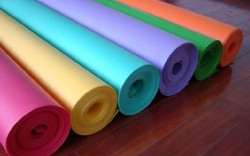 Laminate is an excellent finishing material for the floor due to the decorative and operational properties of this floor covering. First of all, it is beautiful, has a wide variety of different textures and colors for different types of wood or other natural materials, such as stone or tile. Also laminated coating has high strength, which allows it to be used in places with a high concentration of people. These are offices or shops.
Laminate is an excellent finishing material for the floor due to the decorative and operational properties of this floor covering. First of all, it is beautiful, has a wide variety of different textures and colors for different types of wood or other natural materials, such as stone or tile. Also laminated coating has high strength, which allows it to be used in places with a high concentration of people. These are offices or shops.
Laminate is easy to install and quite practical to use, without requiring special care. Also the laminate floor has good moisture resistance and thermal insulation, which gives a few more points in advance when choosing this flooring. For laying the laminate floor a special substrate is used, which has several types and has different properties. To choose the best substrate for a laminate, let's look at its advantages, properties and basic types. This will help to understand whether a laminate substrate is needed at all.
What are the advantages and properties of a laminate substrate?
Soundproofing
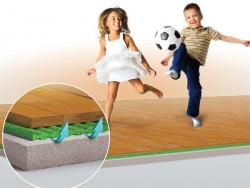 The minus of the laminate flooring is its softness, that is, when walking on such a floor, a characteristic sonorous sound. This can happen for the following reasons:
The minus of the laminate flooring is its softness, that is, when walking on such a floor, a characteristic sonorous sound. This can happen for the following reasons:
- Too small laminate thickness, about 8 millimeters, which is the most popular thickness,
- Floating styling method laminated coating, which creates a kind of membrane between the main floor and the laminated panels. This contributes to the formation of a resounding echo from walking on the floor.
To avoid this negative property, use a substrate under the laminate, which is laid on the rough floor. Some manufacturers sell laminated flooring already with special noise absorption system Usually this is a laminate of 32-34 class, which has a rather high cost. Therefore, it is sometimes advisable to use simple laminated panels separately with the substrate. This is beneficial because the laminate substrate is inexpensive and can significantly reduce the repair budget.
Moisture insulation
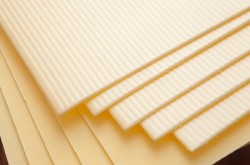 To avoid swelling of the laminated panels due to the accumulation of moisture under the floor, a laminate backing should be used to create an additional barrier between the subfloor and the floor covering, which will prevent the penetration of water.
To avoid swelling of the laminated panels due to the accumulation of moisture under the floor, a laminate backing should be used to create an additional barrier between the subfloor and the floor covering, which will prevent the penetration of water.
In this case, you can use the substrate under the laminate of two types:
- Foil type laminate backingwhich is laid with the metallized side up. This is a good barrier to moisture coming from the subfloor, which will protect the base of the laminate from swelling, and the external surface from cracking.
- Combined type substratehaving a special structure that allows you to ventilate the room. It consists of several layers and removes excess condensate. This is true for high humidity in a room or area.
It may take a whole month to completely dry a fresh concrete screed, which is often an unacceptable luxury, as the following repair phase - laying the laminate floor, so the substrate will be useful in this case. It will maintain the necessary microclimate between the floor and the laminated panels, which will avoid damage to the laminate.
Thermal insulation
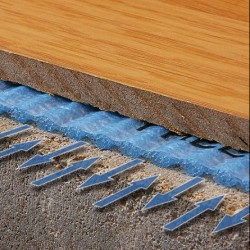 This property of almost any substrate for laminated panels can significantly reduce costs when operating a warm floor in a room, that is, an additional heating system. The substrate will more effectively retain heat where it will be laid.
This property of almost any substrate for laminated panels can significantly reduce costs when operating a warm floor in a room, that is, an additional heating system. The substrate will more effectively retain heat where it will be laid.
By itself, laying a warm substrate under the laminate can eliminate floor heating installation in general, since it is an excellent material that retains heat, not allowing it to leave the room to the floor. Why pay for the energy costs and installation of an expensive underfloor heating, if you can use a highly efficient and high-quality laminate substrate for thermal insulation.
Surface alignment
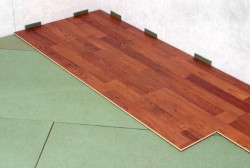 The following property of the substrate is very important, as it helps to smooth out minor roughnesses in the subfloor. Even a new concrete screed may have some defects and irregularities that could eventually damage the laminate. On a perfectly even cement screed, which was recently poured, the so-called “backlash” may form over time, that is slight subsidence, which can lead to separation of the joints of the laminated panels.
The following property of the substrate is very important, as it helps to smooth out minor roughnesses in the subfloor. Even a new concrete screed may have some defects and irregularities that could eventually damage the laminate. On a perfectly even cement screed, which was recently poured, the so-called “backlash” may form over time, that is slight subsidence, which can lead to separation of the joints of the laminated panels.
Therefore, it is necessary to provide additional alignment, which will ensure the laying of the leveling substrate. It should be noted that it is not necessary to use too thick material for flooring, since joints can bend, which will negatively affect the operation of the laminate floor. The most optimal is the substrate under the laminate 3 mm thick.
What should be the thickness of the substrate?
- For the perfect subfloor, which was aligned pre-concrete screed, suitable thickness of the substrate 2 mm.
- Also, for a flat surface with small flaws, a substrate with a thickness of 3 mm.
- If there are significant irregularities, flaws or laying is carried out on an uneven subfloor without special preparation, for example, linoleum or old flooring should use a backing 4 mm thick.
- In special cases, it is required to use a leveling material with a thickness greater than four millimeters. If the bumps are quite large and require an appropriate thickness, then you should ask for a substrate with a thickness 6 mm or even more, for example, a substrate 10 mm thickness.
Substrate Selection Criteria
 What substrate to choose, because the modern construction market offers many options? You should not choose inexpensive material from little-known manufacturers, as this will eventually result in additional costs for the restoration of the laminate floor, when a poor-quality substrate will provoke bloating and deformation of the floor.
What substrate to choose, because the modern construction market offers many options? You should not choose inexpensive material from little-known manufacturers, as this will eventually result in additional costs for the restoration of the laminate floor, when a poor-quality substrate will provoke bloating and deformation of the floor.
The main requirements that must be presented to the substrate:
- Neutrality to alkaline substances and materials;
- Have antibacterial propertiesto prevent the appearance of mold or fungus, as well as microbial foci;
- Thermal insulation, as we have already found out one of the main properties of the substrate for the laminate;
- Moisture resistance It is also very important for this material, as it will save the laminated coating from spoilage;
- An important obstacle to the spread of such a biofactor as insects and rodents;
- Microventilationwhich will remove condensation arising under the floor;
- Resilience and elasticity responsible for relieving pressure from joints (seams) during operation of the laminate.
Types of laminate substrates
Expanded polystyrene under the laminate
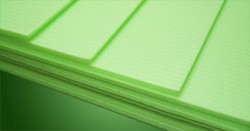 Quite often, extruded polystyrene is used, which perfectly levels the floor and eliminates echo, that is, it creates good sound insulation. The choice of this material will be optimal. for rooms with high traffic. The thickness of this substrate under the laminate is 3 mm, but may be more.
Quite often, extruded polystyrene is used, which perfectly levels the floor and eliminates echo, that is, it creates good sound insulation. The choice of this material will be optimal. for rooms with high traffic. The thickness of this substrate under the laminate is 3 mm, but may be more.
High resistance to vibrations and their suppression, as well as resistance to stresses that occur from pressure when moving across the floor of people or from furniture standing on the floor, guarantees comfortable walking and integrity of the joints and the entire laminate floor as a whole.
The polystyrene substrate under the laminate insulates the floor well and protects against moisture, thanks to its closed cell structure. The material itself has a high density and will retain its original elasticity and integrity for a long time, which will extend the life of the laminate.
Expanded polystyrene substrate has an affordable cost and is easy to install.
Laminate Foam Underlay
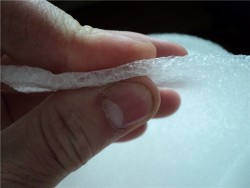 This species is probably the most popular, as it has high practicality and resistance to various factors, such as physical activity, biological component (bacteria, mold, fungus) and has a low cost.
This species is probably the most popular, as it has high practicality and resistance to various factors, such as physical activity, biological component (bacteria, mold, fungus) and has a low cost.
Also, when working with the material there is little waste, which is also an important factor. Polyethylene backing has excellent properties. moisture resistance and thermal insulationIt is also not interesting for rodents and insects, which is important for private homes.
This type often has a metallized aluminum base, i.e. foil laminate backing. This option has improved characteristics of thermal insulation and moisture resistance.
Of the many positive characteristics it should be noted and negative sides of this substrate. This is a low density, which over time can lead to subsidence of the material, which will lose its original shape.
Laminate cork underlay
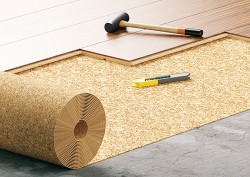 If you ask - which substrate under the laminate is warmer? Then we can say with confidence that this is a cork substrate, since this material has excellent thermal insulation performance. This type also has good resistance to rot and mold. Another positive feature is that the substrate is perfect for a floating floor.
If you ask - which substrate under the laminate is warmer? Then we can say with confidence that this is a cork substrate, since this material has excellent thermal insulation performance. This type also has good resistance to rot and mold. Another positive feature is that the substrate is perfect for a floating floor.
This material used for underfloor heating in room. Cork material does not deform and does not lose its shape over time.
Cork Material Cost quite high, so it is impractical to lay this substrate under an inexpensive laminate, it is better to use it when creating a high-quality expensive laminate floor with high stability.
Combo substrate
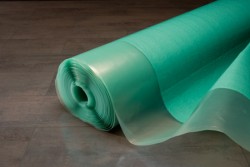 Quite often, combined substrates are used for laying under the laminate. These are materials in which polystyrene foam and polyethylene are used. The most common and well-known such material is Tuplex, which is a several layers like a “sandwich”, where a layer of polystyrene foam balls is laid between two layers of polyethylene.
Quite often, combined substrates are used for laying under the laminate. These are materials in which polystyrene foam and polyethylene are used. The most common and well-known such material is Tuplex, which is a several layers like a “sandwich”, where a layer of polystyrene foam balls is laid between two layers of polyethylene.
This type of substrate is sold in rolls and has a thickness of up to 3 millimeters. The rather interesting design of this combination film allows ventilate space. The top layer of polyethylene has a denser structure and prevents the penetration of moisture that has got on the surface of the laminate. The lower layer of polyethylene, on the contrary, passes moisture and removes it through the middle layer through polyester styrene hollow granules.
Do-it-yourself laying under the laminate
Stages of the work:
- Floor preparation. High-quality laying of the substrate under the laminate will contribute to the durability of the floor laminate. Before laying the substrate, the floor surface must be cleaned of dirt and debris.If the material is placed on a cement or concrete floor, then additional waterproofing should be carried out by putting a plastic film designed for these needs, which has a thickness of 0.2 mm or more.
- Laying false material. Laying the material is recommended to be carried out across the laying direction of the laminated panels themselves. It is imperative to have a substrate on the walls to ensure the safety and durability of the floor covering. Bonding of joints can be carried out with construction adhesive tape. The substrate itself is glued glue or double-sided tape. If one surface of the substrate has a corrugated structure, then the wavy side of it is laid on the rough floor. If one side is foil, then it is turned to the laminate to prevent moisture from the floor covering.
In principle, there is nothing super complicated in laying the substrate under the laminate, and even a beginner will never cope with this repair construction work without ever grasping the tools. This article will help to understand the nuances of laying the substrate under the laminate.

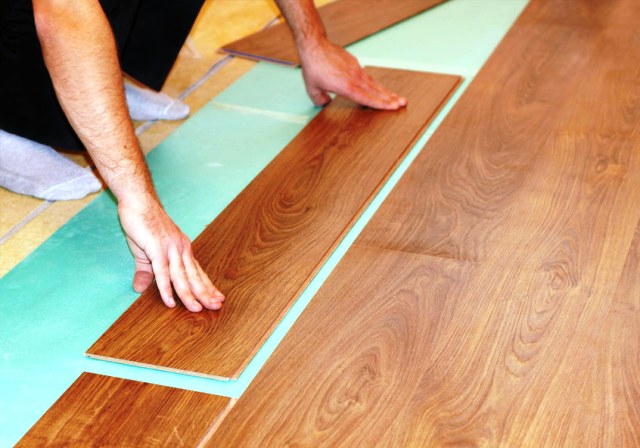

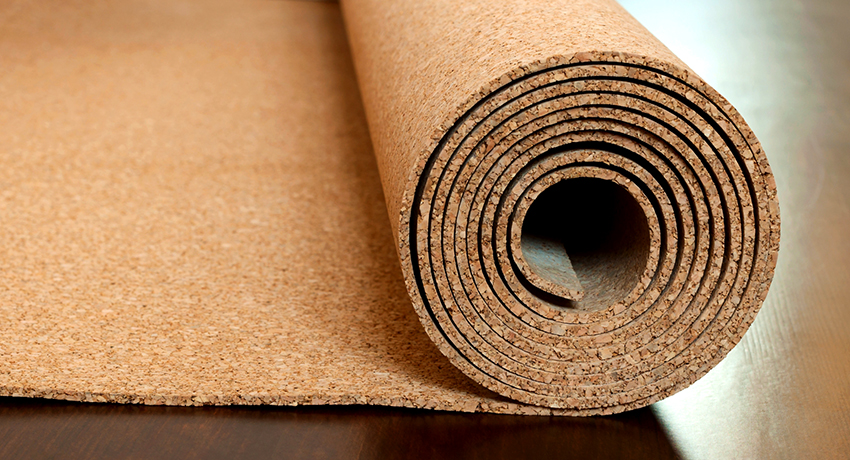

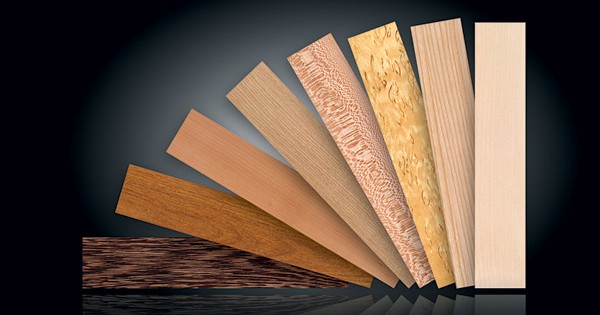


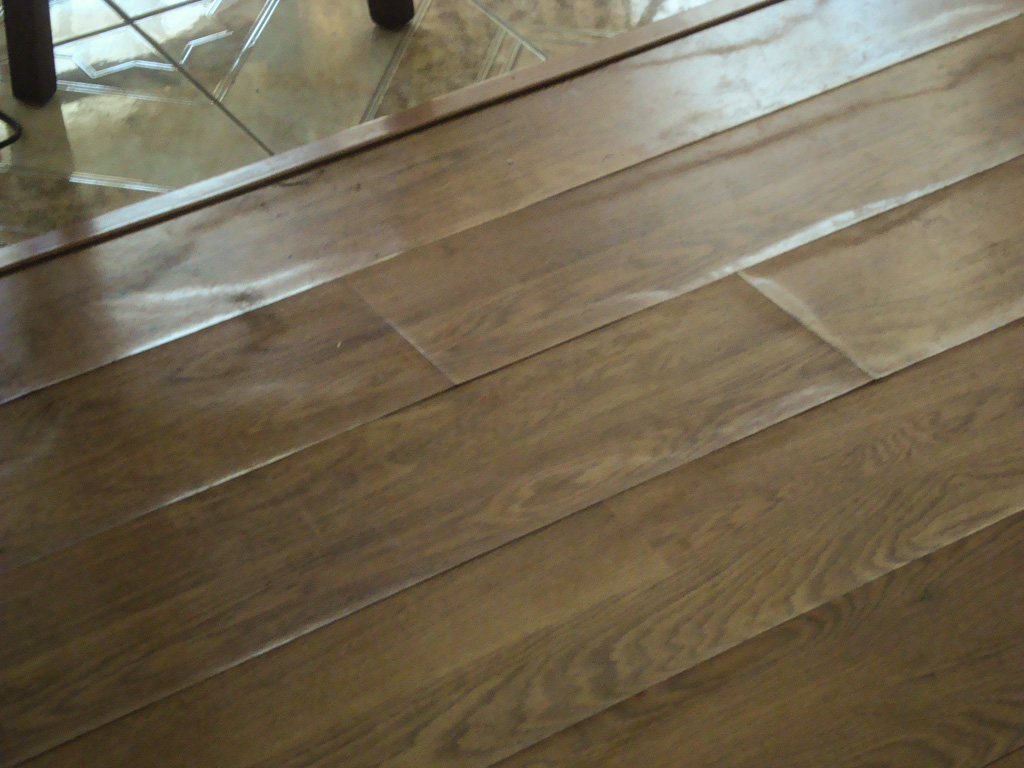
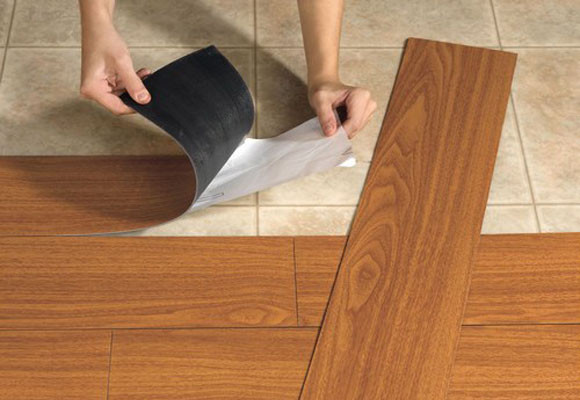
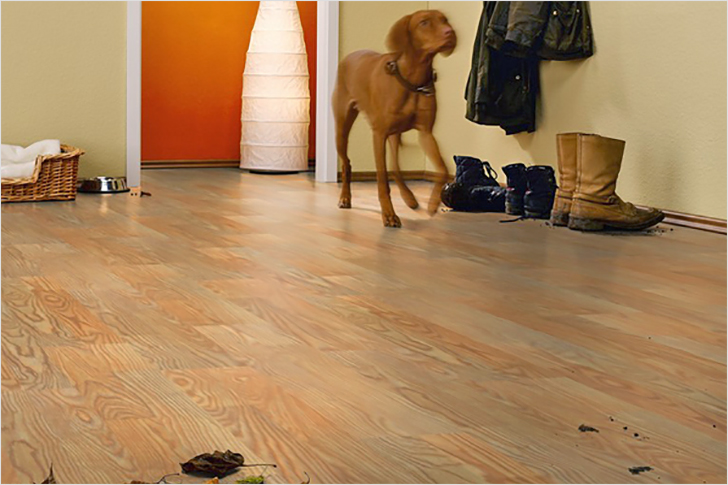
Good substrate